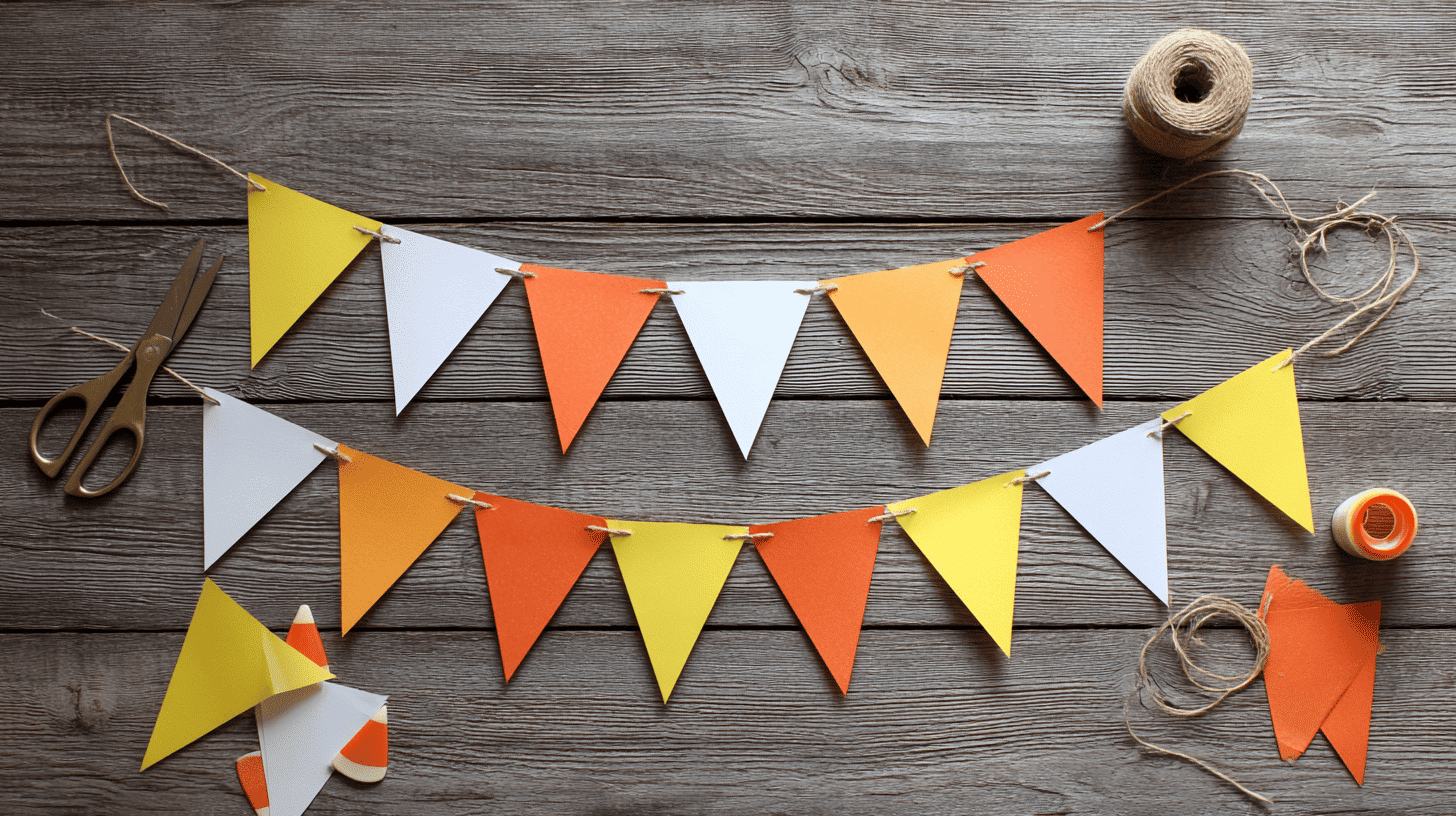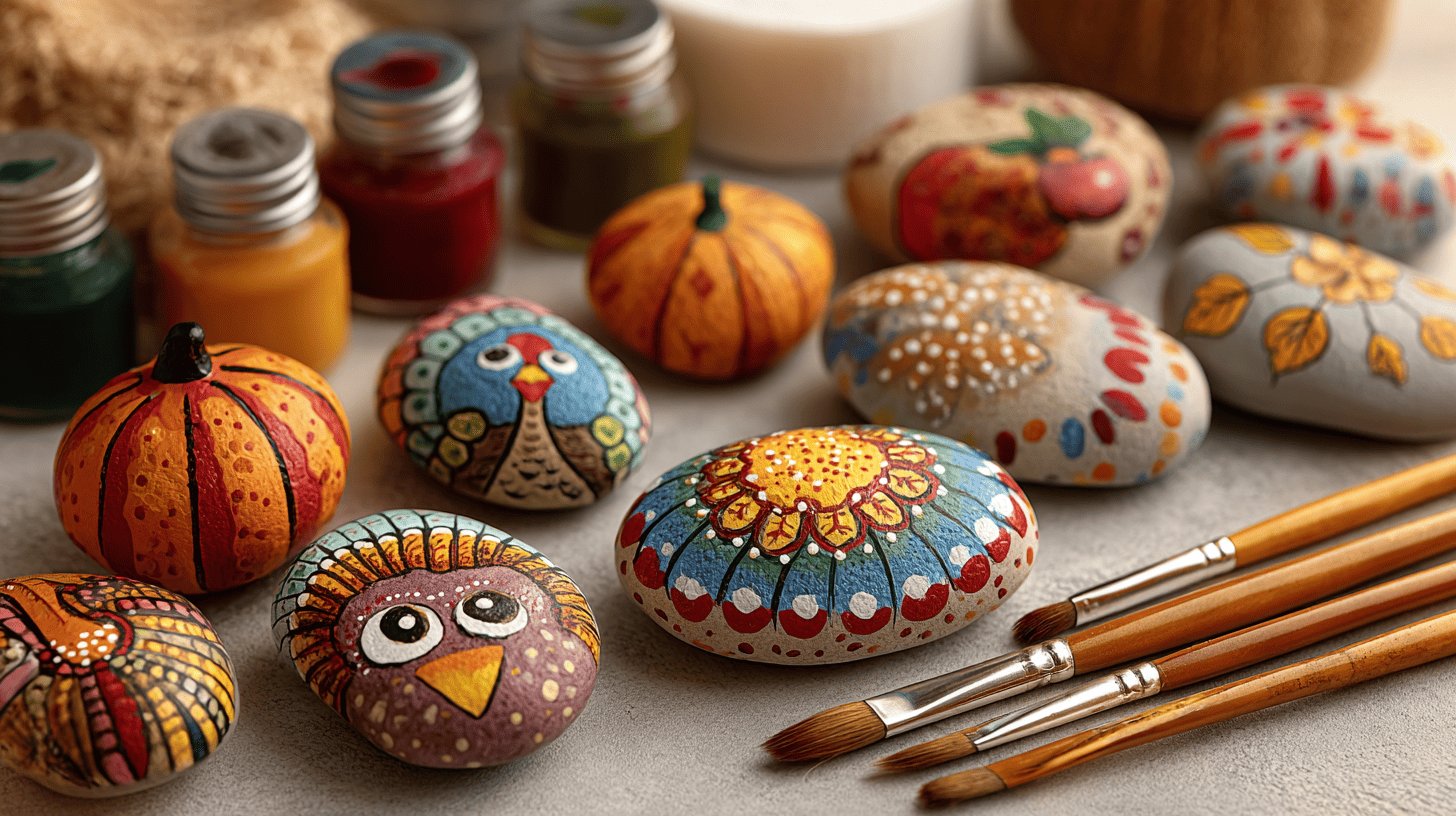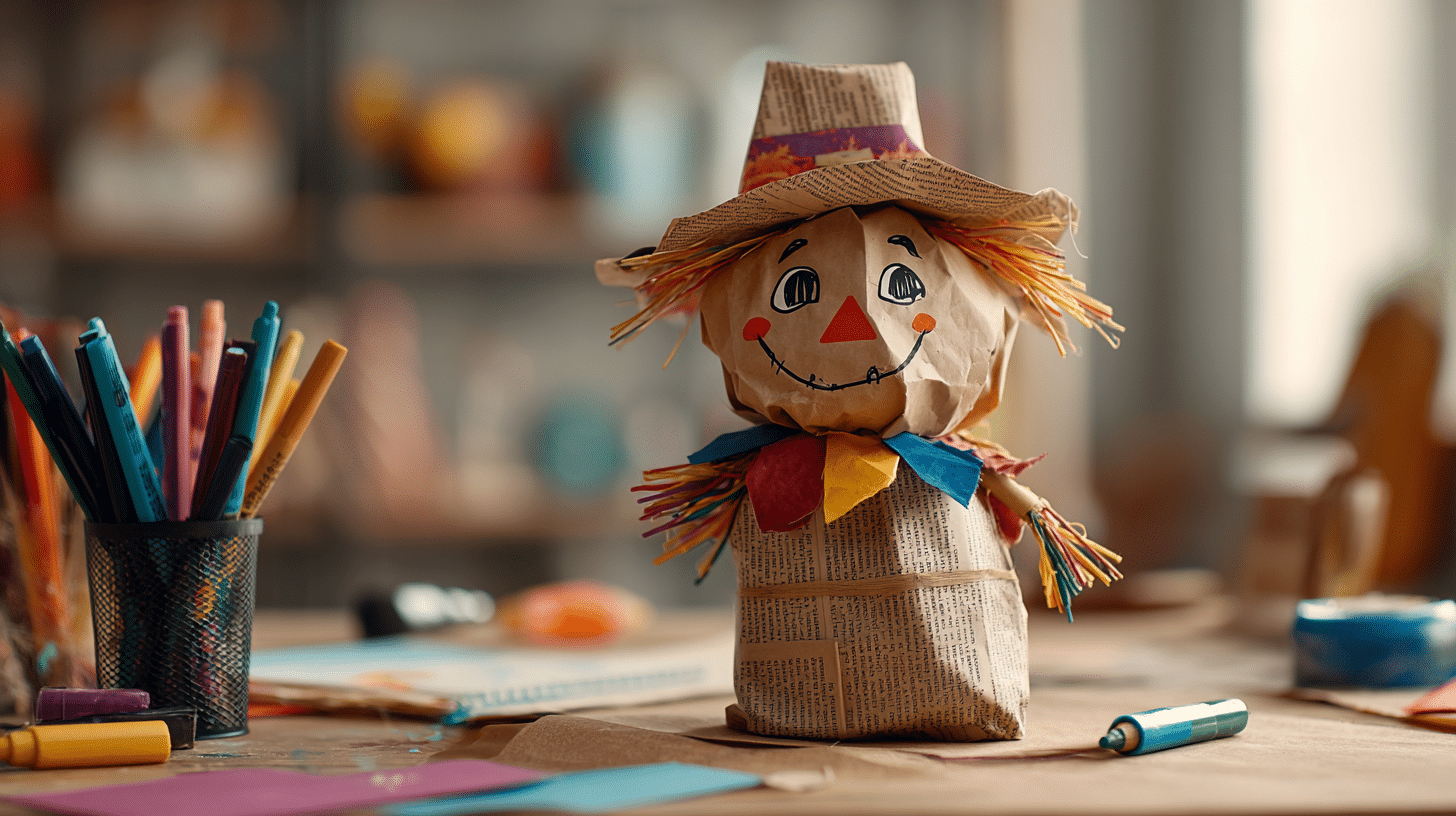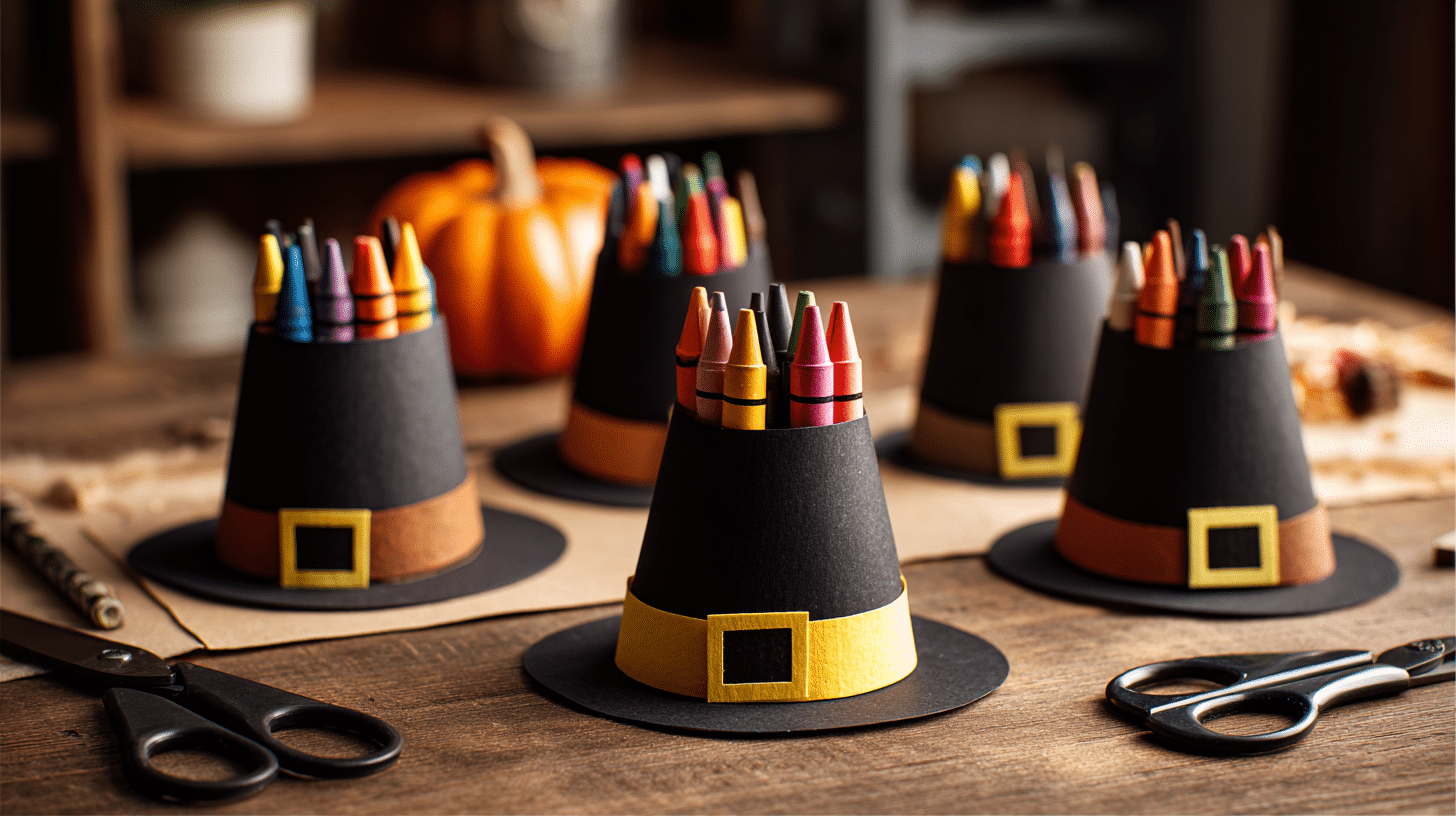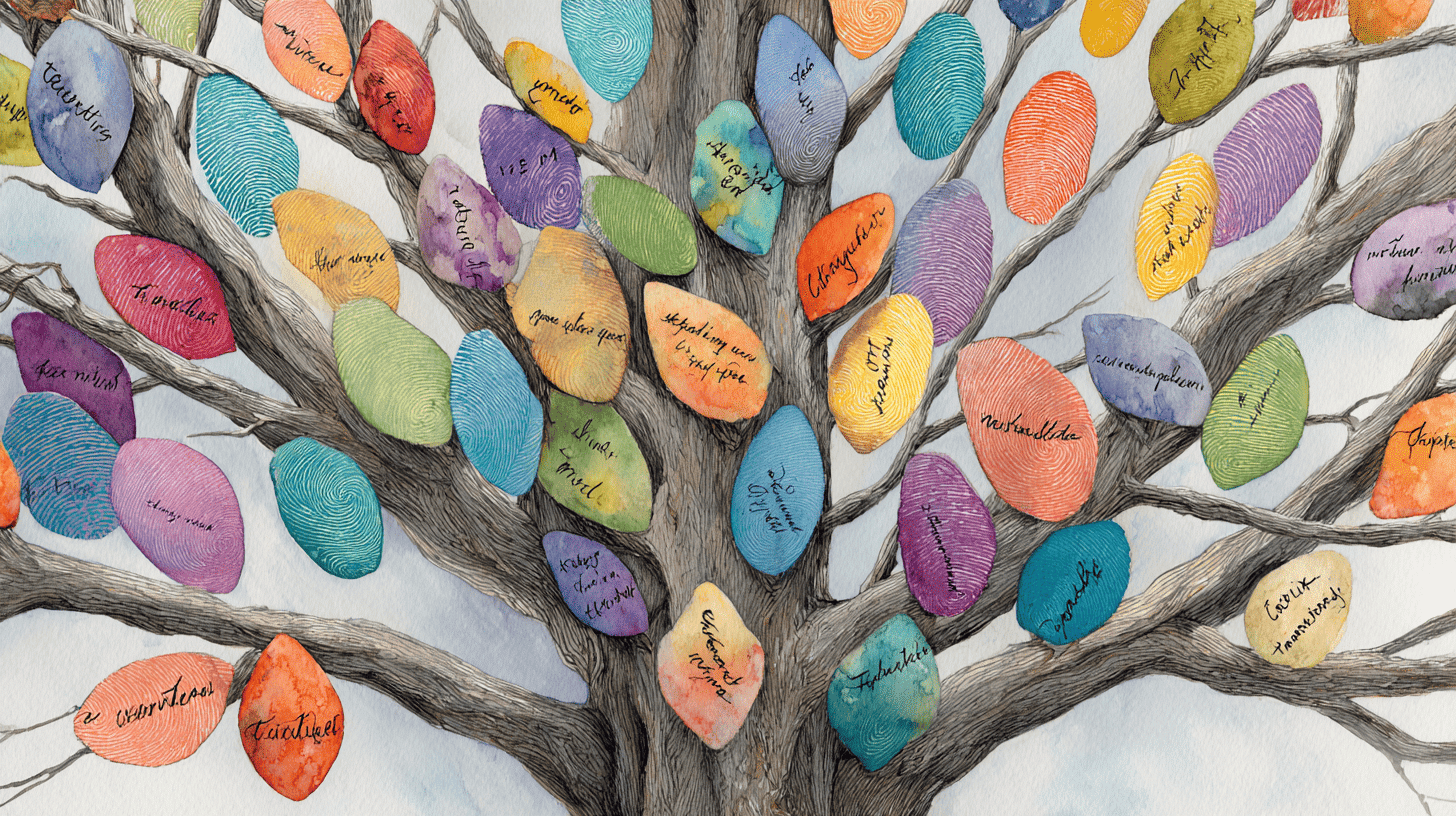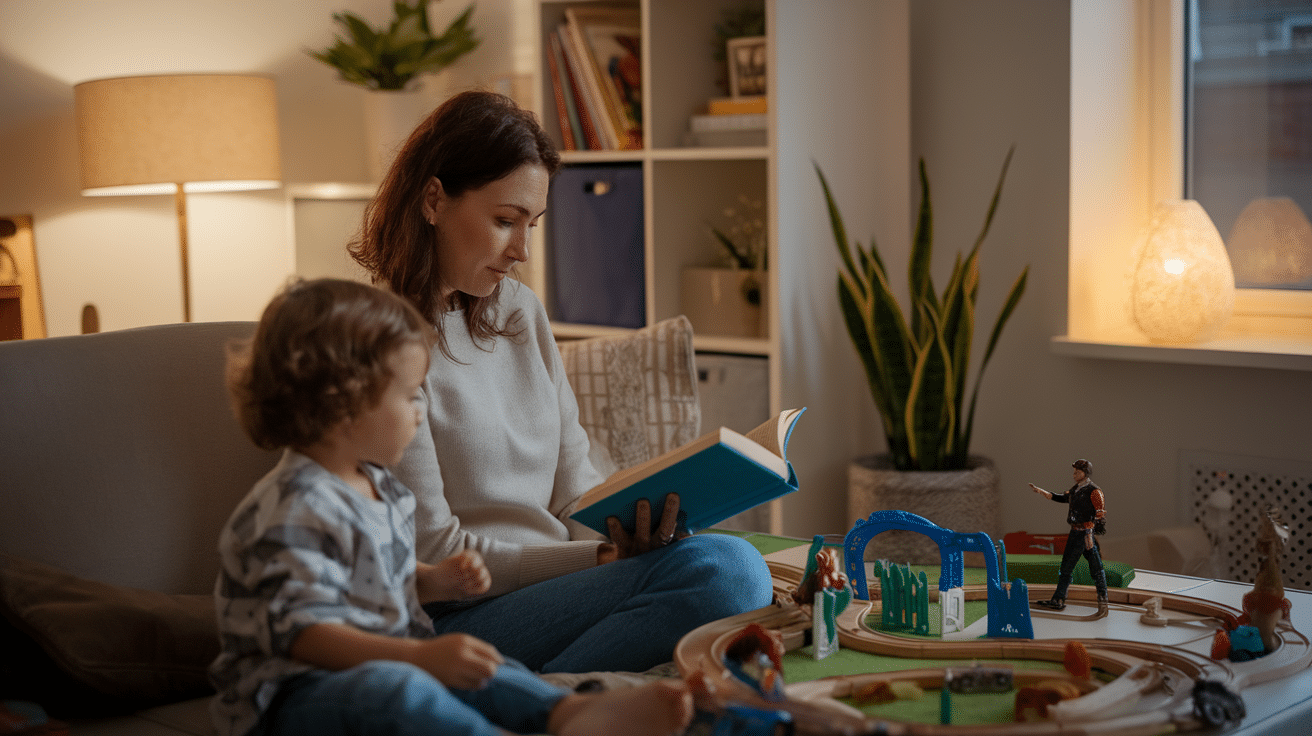Thanksgiving art brings creativity and gratitude together in the most wonderful way. From handprint turkeys to painted gratitude jars, these projects help children celebrate the season while learning valuable skills.
Art activities during Thanksgiving create special memories for families and classrooms alike.
They teach kids to express thankfulness through colors, shapes, and patterns. Best of all, most projects use simple materials you already have at home. Get ready to fill your holiday with creative fun that everyone will enjoy.
These Thanksgiving art ideas will inspire young artists to create beautiful keepsakes and meaningful decorations.
Why Thanksgiving Art Projects Matter for Kids?
Thanksgiving art projects help kids express gratitude while building important skills. Through cutting, gluing, and coloring, children develop fine motor abilities and learn about colors and patterns.
These creative activities also teach empathy as kids think about what they’re thankful for and share their feelings through art.
Making handprint turkeys or paper pumpkins becomes a bonding experience for families and classmates, creating lasting memories together.
When children work side by side on crafts, they learn cooperation and patience. Art becomes more than fun – it’s a meaningful way to teach thankfulness, bring people closer during the holidays, and support their development.
Nature-Inspired Thanksgiving Art Projects
Nature brings out the best in Thanksgiving crafts. Using leaves, pinecones, and outdoor materials connects kids to the season while sparking their creativity. These projects are simple to make and celebrate the beauty of autumn.
1. Handprint Leaf Turkey
Trace each child’s hand on colored paper or on real pressed leaves to make turkey feathers. Cut them out and glue them around a brown paper circle for the body.
Add googly eyes, a beak, and a red wattle. Kids can write something they’re thankful for on each feather before attaching them. It’s a cheerful and personal way to create a holiday keepsake.
Materials: Colored paper or pressed leaves, glue, scissors, googly eyes, markers, pencil.
2. Autumn Leaf Collage Placemat
Take a short walk to collect colorful fall leaves and dry them gently. Arrange the leaves on a sheet of construction paper, overlapping them to create a natural pattern. Glue them down carefully and let the paper dry.
Cover the finished collage with clear contact paper on both sides to turn it into a reusable placemat. It’s a lovely way to bring outdoor beauty to the Thanksgiving table and show off kids’ creativity.
Materials: Real leaves, construction paper, glue, clear contact paper, and scissors.
3. Pinecone Turkey Decoration
Find a pinecone with a flat base and use it as the turkey’s body. Cut feather shapes from red, orange, and yellow paper and glue them into the back of the pinecone.
Add a small paper head with eyes, a beak, and a red wattle at the front. Once dry, place it on a table or shelf as a cheerful decoration. Kids enjoy collecting pinecones and turning them into funny, festive turkeys.
Materials: Pinecones, colored paper, glue, scissors, googly eyes, and markers.
4. Real Leaf Rubbings & Harvest Mural
Place a leaf on a sheet of white paper and gently rub a crayon back and forth across it until the veins and shape appear. Use different leaves and colors to make a page full of rubbings.
After finishing several sheets, glue or tape them together on a large poster board to form a bright harvest mural. It’s a fun group project that celebrates fall textures and teaches kids to notice details in nature.
Materials: Real leaves, white paper, crayons, glue, poster board, tape.
5. Acorn Cap Necklaces
Collect acorn caps and clean them before painting the tops in warm autumn colors. Glue a small bead or pom-pom inside each cap, then attach a string using a glued loop of twine on the back.
Once dry, thread a ribbon or yarn through the loop to wear it. These handmade necklaces are fun keepsakes and make great gifts for family or friends during the Thanksgiving season.
Materials: Acorn caps, paint, beads or pom-poms, glue, twine, string or ribbon, paintbrush.
6. Yarn-Wrapped Mini Pumpkins
Take small pumpkins and wrap them with colorful yarn, covering the entire surface. Start at the stem and secure the yarn with a knot or glue as you go around. Kids can use different colors and patterns to make each pumpkin unique.
These yarn-wrapped pumpkins can be used as decorations on tables, shelves, or in classroom displays, adding a cozy and creative fall touch that’s fun to make together.
Materials: Mini pumpkins, yarn in various colors, glue, and scissors.
7. Candy Corn Garland
Cut triangles from orange, yellow, and white paper to look like candy corn pieces. Glue or tape the pieces onto a string, alternating colors for a cheerful pattern.
Hang the garland on walls, windows, or doorways to add a festive touch. This simple craft lets children practice patterns and sequencing while creating a bright decoration for Thanksgiving and the fall season.
Materials: Colored paper (white, yellow, orange), string, glue or tape, scissors.
8. Painted Rocks: Turkey & Fall Leaves
Collect smooth rocks and paint them to resemble turkeys, leaves, or pumpkins. Use markers or paintbrushes to add details like feathers, eyes, or veins. Once dry, these rocks can decorate tabletops, garden areas, or classroom shelves.
This craft combines painting and creativity, allowing children to practice fine motor skills while making cheerful fall-themed decorations that last longer than paper projects.
Materials: Smooth rocks, acrylic paint, paintbrushes, markers, and paper towels.
9. Corn Husk Dolls
Soak dried corn husks in water until they are soft and flexible. Layer the husks and fold them to form the doll’s body, tying sections with string to make arms, legs, and a head.
Children can decorate the dolls with markers, yarn, or small fabric scraps. These dolls celebrate harvest traditions and give kids a hands-on way to explore textures and creativity while connecting with nature.
Materials: Dried corn husks, string, markers, yarn, fabric scraps, scissors.
10. Paper Bag Scarecrow
Take a small brown paper bag and fill it with crumpled newspaper to make a soft body. Fold and tie parts of the bag to create arms and legs, then decorate the face with markers, paper, or felt.
Add scraps of fabric for clothing and a paper hat on top. These scarecrows make fun decorations for the classroom, home, or Thanksgiving displays, and allow kids to use simple materials to build a seasonal character.
Materials: Brown paper bags, newspaper, markers, fabric scraps, glue, scissors, and paper.
11. Popsicle Stick Harvest Sign
Glue several Popsicle sticks side by side to create a small board. Paint or write a harvest message like “Give Thanks” or “Happy Fall” on the sticks. Add small decorations like leaves, acorns, or painted pumpkins around the edges.
Once dry, attach a string at the top for hanging. This craft allows children to practice painting and lettering while making a seasonal decoration to display at home or in the classroom.
Materials: Popsicle sticks, paint, markers, glue, string, and small decorative items.
12. Fall Leaf Garland
Collect or cut paper leaves in red, orange, and yellow shades. Punch a hole at the top of each leaf and thread them onto a piece of string in a repeating pattern.
Hang the garland across windows, doorways, or walls for a colorful autumn display. Kids can add their own designs or write something they are thankful for on each leaf to make the decoration more personal.
Materials: Colored paper, string, hole punch, markers, scissors.
13. Tissue Paper Fall Leaves Wall Hanging
Cut leaf shapes from tissue paper in various autumn colors. Glue or tape the leaves to a large piece of cardboard or poster board, layering them to create a wall hanging.
Children can crumple or layer the tissue paper to give the leaves texture and depth. This project creates a soft, colorful decoration that brightens up any space while letting kids practice cutting, gluing, and arranging.
Materials: Tissue paper, cardboard or poster board, glue, tape, and scissors.
14. Egg Carton Pumpkin Patch
Cut individual sections from an egg carton and paint them orange to look like pumpkins. Add green paper leaves or stems at the top of each section.
Arrange the pumpkins together on a tray or shallow box to form a pumpkin patch. Kids enjoy painting and arranging the pumpkins, and the patch can serve as a seasonal centerpiece or display for Thanksgiving.
Materials: Egg cartons, orange and green paint, paper, glue, scissors, tray or shallow box.
15. Pinecone Place Card Turkeys
Use small pinecones for the turkey’s body and glue paper feathers behind them. Add a small paper head with eyes, a beak, and a wattle.
Write each guest’s name on the paper feathers or on a small card attached to the turkey. These place cards are a fun and creative way for children to help set the Thanksgiving table while adding a personal touch to each seat.
Materials: Pinecones, colored paper, glue, scissors, markers, and googly eyes.
Easy Thanksgiving Art Activities
Sometimes the best crafts are the simplest ones. These easy Thanksgiving art activities use basic materials you probably already have at home.
They’re perfect for young children or anyone looking for quick, fun projects that don’t require complicated steps.
16. Paper Plate Turkey Craft
Take a paper plate and paint or color it brown to form the turkey’s body. Cut feather shapes from colored paper and glue them around the edge of the plate. Add a paper head, googly eyes, a beak, and a wattle.
Children can decorate each feather with patterns or write things they are thankful for. The finished craft can be displayed on walls, windows, or tables as a cheerful Thanksgiving decoration.
Materials: Paper plate, colored paper, glue, scissors, markers, and googly eyes.
17. Handprint Turkey Keepsake
Trace a child’s hand on colored paper and cut it out to make turkey feathers. Glue the feathers around a paper circle or the child’s photo to create the turkey’s body.
Add eyes, a beak, and a wattle using paper or markers. Kids can write what they are thankful for on each feather. This keepsake is perfect for decorating the classroom, home, or as a gift for family members.
Materials: Colored paper, glue, scissors, markers, photo (optional).
18. Toilet Paper Roll Pilgrims & Native American Figures
Use empty toilet paper rolls as the base for Pilgrim and Native American figures. Paint or wrap the rolls with paper to create clothing, then add paper or felt details for faces, hats, and accessories.
Children can arrange the figures in a small diorama or display to represent Thanksgiving history in a simple, hands-on way while practicing cutting, gluing, and painting skills.
Materials: Toilet paper rolls, colored paper, paint, glue, scissors, markers, and felt.
19. Turkey Headbands for Kids
Cut out a strip of paper to fit around a child’s head and attach colorful paper feathers at the back. Add a small turkey face at the front using paper, markers, and googly eyes.
Children can wear these headbands for Thanksgiving celebrations or class activities, combining craft skills with imaginative play. Decorating feathers with patterns or words of thanks adds a personal touch.
Materials: Colored paper, glue, scissors, markers, and googly eyes.
20. Thanksgiving Place Cards
Fold small pieces of paper or cardstock to make place cards for the table. Decorate each card with Thanksgiving-themed drawings like turkeys, pumpkins, or leaves.
Children can write the names of family or friends on the cards and add personal designs. These place cards help set a festive table while giving kids a chance to practice writing and drawing in a creative way.
Materials: Cardstock or paper, markers, colored pencils, glue, and scissors.
21. Pilgrim Hat Crayon Holders
Create a small cone from black paper and attach a flat circle at the base to form a Pilgrim hat. Add a yellow buckle, decorated with paper or markers. Place crayons inside the hat to make a fun holder.
Children can make multiple holders to give as gifts or to organize art supplies during Thanksgiving activities. This project combines creativity with a practical use that adds holiday cheer to any table.
Materials: Black and yellow paper, glue, scissors, markers, crayons.
22. DIY Tablecloth Drawing: “What I’m Thankful For”
Spread a large sheet of butcher paper or a plain white tablecloth across the Thanksgiving table. Give children (and adults!) washable markers or crayons to draw, doodle, or write things they are thankful for directly on the surface.
Encourage everyone to add pictures of family, food, or memories as the meal goes on. This turns the table into a shared art piece that celebrates gratitude and keeps guests engaged throughout dinner.
Materials: Butcher paper or plain tablecloth, washable markers or crayons, tape (optional).
23. Thanksgiving Story Stones
Collect small, smooth stones and paint images of Thanksgiving symbols, such as turkeys, pumpkins, leaves, or Pilgrims. Children can use the stones to tell stories or play games, arranging them in different sequences.
This craft encourages imagination, storytelling, and fine motor skills while creating interactive decorations that can be used long after Thanksgiving.
Materials: Smooth stones, acrylic paint, paintbrushes, markers, and paper towels.
24. Popsicle Stick Turkey Puppets
Glue colored paper feathers to one end of a popsicle stick to form a turkey tail. Attach a paper turkey head with eyes, a beak, and a wattle to the front.
Kids can use the stick as a puppet to play with or to tell Thanksgiving stories. These simple puppets combine crafting and imaginative play while allowing children to practice cutting, gluing, and decorating skills.
Materials: Popsicle sticks, colored paper, glue, scissors, markers, and googly eyes.
25. Paper Bag Turkey Puppet
Fill a small brown paper bag with tissue or newspaper to create a soft body. Fold and glue parts of the bag to form wings and attach a paper turkey head with eyes, a beak, and a wattle.
Children can use the puppet to act out Thanksgiving stories or display it as a decoration. This project is a fun way to combine crafting and imaginative play for the holiday.
Materials: Brown paper bag, tissue or newspaper, colored paper, glue, scissors, markers, and googly eyes.
26. Turkey Footprint Art
Paint a child’s foot with washable paint and press it onto paper to create the turkey’s body. Once dry, add a head, beak, eyes, and colorful paper feathers around the footprint.
Children can also write something they are thankful for on each feather. This activity is messy but fun, producing a personal keepsake that shows growth and creativity while celebrating Thanksgiving.
Materials: Washable paint, paper, colored paper, markers, glue, and scissors.
27. Pumpkin Paper Lanterns
Cut pumpkin shapes from orange construction paper and decorate them with markers, stickers, or cutouts. Fold and glue the paper into a cylinder, leaving openings at the top and bottom.
Add a paper handle for carrying or hanging. Children can place a small battery-operated light inside for a glowing effect, creating a cheerful decoration for windows or tabletops.
Materials: Orange paper, glue, scissors, markers, stickers, string, small battery light.
28. Beaded Corn on the Cob Craft
Use yellow and brown beads to create a corn-on-the-cob design on a piece of cardboard or a pipe cleaner.
Arrange the beads in rows to resemble kernels, then add green paper leaves at the base. This craft allows children to practice fine motor skills while creating a textured, colorful representation of harvest corn.
Materials: Beads (yellow, brown, green), pipe cleaners or cardboard, glue, scissors, and green paper.
29. Salt-Painting Fall Leaves
Mix watercolors with a little water and paint leaf shapes on thick paper. While the paint is still wet, sprinkle salt over the leaves.
The salt absorbs the paint, creating interesting textures and patterns. Once dry, gently brush off the salt. Kids enjoy seeing the magical effects as colors shift and blend, creating a unique fall artwork.
Materials: Watercolor paint, paper, salt, paintbrushes, water container.
30. Pilgrim Hat Greeting Cards
Cut a black paper shape resembling a Pilgrim hat and attach it to a folded piece of cardstock. Add a yellow paper buckle and decorations using markers or stickers.
Children can write a Thanksgiving message inside the card and give it to friends or family. This craft combines creativity and writing practice while making a personalized seasonal greeting.
Materials: Black and yellow paper, cardstock, glue, markers, scissors, stickers.
Meaningful Thanksgiving Art Ideas
Thanksgiving is the perfect time to help children think deeply about gratitude. These meaningful art projects go beyond decoration – they encourage kids to reflect on what matters most in their lives.
31. Gratitude Jar with Painted Stones
Take small, smooth stones and paint them with bright colors. Write words or symbols on each stone that represent something to be thankful for. Place the stones in a jar for display.
Each day, children can add a new stone or share the meaning behind one. This craft encourages reflection and conversation about gratitude while creating a colorful decoration for the home or the classroom.
Materials: Smooth stones, paint, markers, a jar, paintbrushes, and paper towels.
32. “I’m Thankful For” Leaf Garland
Cut leaf shapes from colored paper and have children write something they are thankful for on each leaf. Punch a hole at the top of each leaf and thread them onto a string.
Hang the garland on a wall, across a window, or above a doorway. This project helps children express gratitude while creating a bright and cheerful decoration for Thanksgiving.
Materials: Colored paper, string, hole punch, markers, scissors.
33. Family Handprint Wreath
Trace and cut out the handprints of each family member from colored paper. Arrange the handprints in a circle to form a wreath and glue them together.
Add a paper bow or small decorations, such as leaves or pumpkins, to complete the design. This keepsake celebrates family togetherness and creates a meaningful decoration for the Thanksgiving season.
Materials: Colored paper, scissors, glue, markers, and small decorative items.
34. Fingerprint Gratitude Tree
Draw a bare tree trunk and branches on a sheet of paper or poster board. Children dip their fingers in paint and press them onto the branches to create colorful leaves.
On each fingerprint, they can write something they are thankful for. The finished tree becomes a visual representation of gratitude and a bright, personal decoration for Thanksgiving.
Materials: Paper or poster board, paint, markers, paper towels.
35. “Thank You” Cards for Community Helpers
Fold cardstock to make small greeting cards. Children can decorate the front with drawings, stickers, or cut-out shapes, then write a thank-you message inside for teachers, firefighters, mail carriers, or other helpers.
This craft encourages appreciation while giving kids a chance to practice writing and creativity.
Materials: Cardstock, markers, crayons, stickers, glue, and scissors.
36. Memory Pumpkins (Write a Memory on Each)
Cut pumpkin shapes from colored paper or cardstock. Children write a special memory or moment from the past year on each pumpkin.
Arrange the pumpkins on a wall, poster board, or table display to create a memory patch that celebrates the season and personal experiences.
Materials: Colored paper or cardstock, markers, scissors, glue, or tape.
37. Fold-Out Gratitude Zine Book
Fold a sheet of paper to make a small booklet. Each page can feature drawings, writings, or short notes about things children are thankful for.
Kids can decorate the covers and pages with stickers, stamps, or drawings. The zine becomes a portable, personal gratitude journal that they can share with family and friends.
Materials: Paper, markers, crayons, stickers, and scissors.
38. “What Makes Me Thankful” Watercolor Silhouettes
Draw or trace a silhouette of a hand, heart, or another shape on thick paper. Use watercolors to fill the silhouette with colors and patterns.
Children can write words or short phrases inside the shape about things they are thankful for. This project combines painting and reflection, creating a colorful and meaningful piece of art.
Materials: Thick paper, watercolors, paintbrushes, markers, and pencil.
39. DIY Gratitude Fortune Cookies
Fold strips of paper into small fortune cookie shapes and write messages of thanks or positive thoughts inside each one. Children can decorate the paper with drawings, patterns, or stickers before folding. Place the cookies in a bowl or give them to family members.
Each “cookie” can be opened to reveal a kind note, creating a fun and interactive way to practice gratitude while making a cheerful Thanksgiving craft that encourages sharing and reflection.
Materials: Paper strips, markers, stickers, glue, and scissors.
40. Pumpkin Gratitude Stamps
Carve a small pumpkin or Thanksgiving shape into a sponge or potato to create a unique stamp. Dip the stamp into ink or paint and press it onto paper to make festive prints.
Afterward, children can write things they are thankful for on each print. This fun, hands-on craft is a great way for kids to reflect on gratitude while creating colorful Thanksgiving decorations.
Materials: Sponges or potatoes, carving tools, paint or ink, paper.
41. Seasonal Wooden Board Art
Paint a wooden board with warm colors, and then add a special message like “Be Grateful” or “Season of Thanks” in bold lettering. Children can decorate the board with designs like pumpkins, leaves, or acorns, and add fun details such as glitter or fabric bows.
This craft provides a hands-on way for kids to express gratitude and create a piece of art that can be used as a seasonal decoration for the home or given as a gift.
Materials: Wooden board, paint, brushes, markers, fabric, glue, wooden cutouts, ribbons.
42. Blessings Box Collage
Use a small box or container as the base for a blessings box. Children cut out pictures, words, or shapes from magazines and glue them onto the box to decorate it.
Throughout the week, they can write what they’re thankful for on slips of paper and place them in the box. This craft creates a visual, interactive way to celebrate gratitude and make a personalized decoration.
Materials: Small box, magazines, glue, scissors, paper, and markers.
43. Hands of Gratitude Banner
Trace each child’s hand on colored paper and cut out the shapes. On one hand, they write one thing they are thankful for. Attach all the hands to a string or ribbon to form a banner, then hang it in a classroom, doorway, or wall.
The banner grows as more hands are added, creating a cheerful display of gratitude while encouraging children to reflect on positive experiences and share them with others.
Materials: Colored paper, scissors, markers, string or ribbon, tape or glue.
Tips for a Stress-Free and Memorable Thanksgiving Art Day
Planning ahead makes Thanksgiving art projects run smoothly and keeps everyone happy. A little preparation prevents messes and helps kids focus on creating rather than searching for supplies.
- Organize Supplies Beforehand: Sort materials into labeled bins or containers so everything is easy to find when you need it.
- Protect Your Workspace: Cover tables with plastic tablecloths, newspapers, or trays to catch paint spills and glue drips.
- Set up a Drying Area: Designate a safe spot where wet crafts can dry without getting damaged or causing mess.
- Encourage Sharing Stories: Ask children to explain their creations and talk about what they’re thankful for in their artwork.
- Keep Cleanup Simple: Have wet wipes, paper towels, and trash bags nearby for quick and easy tidying up.
With these simple strategies, you’ll spend less time worrying about chaos and more time enjoying the creative process. Your Thanksgiving art session will become a cherished tradition that everyone looks forward to each year.
Wrapping It Up
These thanksgiving art projects offer endless opportunities for creativity and connection this holiday season. Each activity helps children practice gratitude while making festive decorations they’ll be proud to display.
From nature-inspired crafts to meaningful reflection pieces, there’s something here for every age and skill level.
The memories you create together will last far beyond the holiday itself. Ready to get started?
Grab your supplies and try one of these projects today. I’d love to hear which thanksgiving art activity becomes your family favorite – share your creations and experiences in the comments below!








